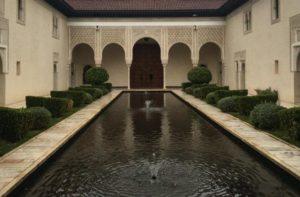Fodor's Expert Review Tanneries
For a whiff of Marrakesh life the old way, the tanneries are a real eye-waterer, not least because of the smell of acrid pigeon excrement, which provides the ammonia that is vital to the tanning process. Six hundred skins sit in a vat at any one time, resting there for up to two months amid constant soaping, scrubbing, and polishing to get the leather strong, supple, clean, and ready for use. Once the hides have been stripped of fur, washed, and made supple through this six-week process, the final stage involves soaking and rubbing in a mix of ground mimosa bark and water, which eventually turns the grayish-green hides into the natural reddish-brown or "tan" shade that we always expect in our natural leather goods. The tanned skins are dried in the sun and then sold direct to the artisans near Ben Youssef Mosque. Additional color dyeing takes place after the skins have been purchased by the artisans in another part of the souk.
Thirteen tanneries are still in operation in the... READ MORE
For a whiff of Marrakesh life the old way, the tanneries are a real eye-waterer, not least because of the smell of acrid pigeon excrement, which provides the ammonia that is vital to the tanning process. Six hundred skins sit in a vat at any one time, resting there for up to two months amid constant soaping, scrubbing, and polishing to get the leather strong, supple, clean, and ready for use. Once the hides have been stripped of fur, washed, and made supple through this six-week process, the final stage involves soaking and rubbing in a mix of ground mimosa bark and water, which eventually turns the grayish-green hides into the natural reddish-brown or "tan" shade that we always expect in our natural leather goods. The tanned skins are dried in the sun and then sold direct to the artisans near Ben Youssef Mosque. Additional color dyeing takes place after the skins have been purchased by the artisans in another part of the souk.
Thirteen tanneries are still in operation in the Bab Debbagh area in the northeast of the medina. Simply turn up Rue de Bab Debbagh and look for the tannery signs above several open doorways to both the right and left of the street. To visit one of them, just pop in and the local manager will offer you mint leaves to cover the smell, explain the process, and guide you around the vats of dyes. In return he'll hope for a healthy tip to share with his workers; this is a dying art in a poor dyeing area, so the more you can tip, the better.
Finding the tanneries can be frustrating. It's best to arrive via taxi and ask for Bab Debbagh (the tanneries are straight ahead through the gate) or the Place el Mokf (Avenue Bab Debbagh is at the top on the left). Alternatively, task an official guide to include the visit as part of a city walking tour, but beware of false guides who are plentiful and forceful in this area.
READ LESS



